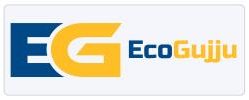E-invoicing now forms a vital component of the contemporary business processes, particularly streets where the tax authorities are encouraging the adoption of new technologies in business. ZATCA E-Invoicing Phase 2 is a major compliance model that has been adopted by the Zakat, Tax, and Customs Authority (ZATCA) in Saudi Arabia. This initiative would help to create a more transparent and less fraudulent and efficient financial reporting that will benefit the businesses and regulators.
In the case of companies, this stage will not involve simply issuing invoices electronically, but there will require complete integration of the system with ZATCA Fatoora platform. The companies should upgrade their accounting and ERP systems to the high-technical standards, whereby the invoices should be produced in XML format, validated in real time and encrypted with the QR codes. To facilitate the compliance, automated integration, real time reporting and error free invoicing solutions such as Quickdice ERP would match the requirements of ZATCA.
Here are some of the ways ZATCA’s E-Invoicing Phase 2 is changing compliance for businesses.
System Integration with Fatoora.
The integration of business systems with the Fatoora platform is one of the most important tasks of the E-Invoicing Phase 2 created by ZATCA. This integration will guarantee that the data on invoices is immediately shared with ZATCA to check the data and approve it. Companies whose processes are still manual experience the threat of lag time, mistakes, and fines.
Quickdice ERP will help companies to create a smooth integration even without the need to revamp their systems. The software will facilitate direct connectivity with Fatoora, and the transition will become easier, and businesses will be able to meet the changing structure of e-invoicing in Saudi Arabia.
XML Format Compliance
Phase 2 e-invoices should be created in a certain XML format. This will guarantee standardization and compliance with the validation systems of ZATCA. To most companies, it may be difficult to adapt to such a format in case they are operating on outdated software in accounting.
Quickdice ERP makes this process easier as invoices will automatically be created in the desired XML format. This will remove the possibility of manual conversion or extra plug-ins and decrease compliance risks and make sure that invoices are always accepted by ZATCA.
Real-Time Reporting to ZATCA
Reporting in real-time is also another characteristic of Phase 2. All sales operations and invoices should be sent to ZATCA immediately to be checked. Companies that do not report in real-time are prone to legal and financial repercussions.
The solution, in this case, is automation. Quickdice ERP is designed to be synchronized in real-time with the Fatoora platform, which means that invoices will be sent and verified in real time. This does not only make businesses be in compliance but also it gives them a peace of mind knowing that their invoicing process is always a step ahead.
Authentication by mandatory QR Codes.
ZATCA also obliges all electronic invoices to contain a QR code. These QR codes enable the customers and the tax authority to verify and check the authenticity of invoices. It is one of the essential measures toward becoming more transparent and avoiding fraud.
Quickdice ERP will automatically insert QR codes on all invoices. Businesses do not have to be concerned with manual generation and mistakes, and it is simpler to address the demanding needs of ZATCA E-Invoicing Phase 2.
Improved Checking and Additional Document types.
The system of ZATCA has become more stringent in the validation of invoices. Lack of information or unfinished data would result in rejections and compliance problem. Also, businesses have to produce and submit not only invoices, but also new types of documents, including credit notes, debit notes, and documents related to advance payments.
Quickdice ERP also has built-in validation engine which verifies the invoice prior to submissions which results to accuracy and completeness of an invoice. All the types of documents required by ZATCA are also supported by the system, and it implies that a business will deal with all the invoicing cycles within one platform without any other tools.
Implementation in Phases and Deadlines.
ZATCA is implementing Phase 2 in phases, and the deadlines are announced to companies depending on the annual revenue and tax turnover. The companies which fail to do so on time will be punished or their operations will be interrupted.
Businesses using Quickdice ERP would be able to plan to meet deadlines and have a high level of compliance. The system is also constantly updated to the new ZATCA requirements which served to keep organizations on track without scurrying to meet the deadline.
Business Compliance Impact.
Increased Transparency
The data will be shared in real-time with ZATCA, which will increase trust and transparency. The companies are not only relieved of needless confrontations with the taxman but also enjoy a seamless communication with them.
Legal Validity
The invoices, which have not been cleared by the system of ZATCA, are not regarded as being lawful. This has a direct bearing on the deductions of VAT and cash flow management and therefore compliance is necessary.
Risk of Penalties
Failure to comply may attract huge fines. With the automation of businesses complying with the Quickdice ERP, businesses prevent the expensive errors and financial fines.
Operational Efficiency
Automation removes the need to enter data manually, minimizes the amount of work done in reconciliation, and conserves personnel time. This effectiveness enables business to concentrate on expansion as opposed to administration.
Improved Decision-Making
With access to reliable and timely financial information, it is easy to make decisions in a faster and smarter way. The leaders of the business are more capable of monitoring cash flow, expenses, and revenues.
Increased Financial Accuracy.
Strict validation and automation minimize human error resulting in more accurate financial reporting and long-term planning is enhanced.
Conclusion
The E-Invoicing Phase 2 of ZATCA is one of the significant changes in the process of managing compliance and financial reporting by businesses in Saudi Arabia. The new requirements, including the presence of mandatory QR codes and XML format and the possibility of real-time integration with the Fatoora platform, have no place in the system of yesteryear. The business entities still using manual processes are at risk of facing fines, ineligible invoices and inefficiencies in their operations.
The positive part is that these and other modern ERP such as the Quickdice ERP make this transition easier. Having automated XML invoice, QR code integration, real-time reporting, and advanced validation among other features, Quickdice makes sure that businesses are not going to be hindered by the rigid requirements of ZATCA. To remain compliant and efficient, as well as enhance the accuracy of financial data, implementing Quickdice ERP is not a choice, but a mandatory tool of success in the long term within the changing environment of e-invoicing in Saudi Arabia.



